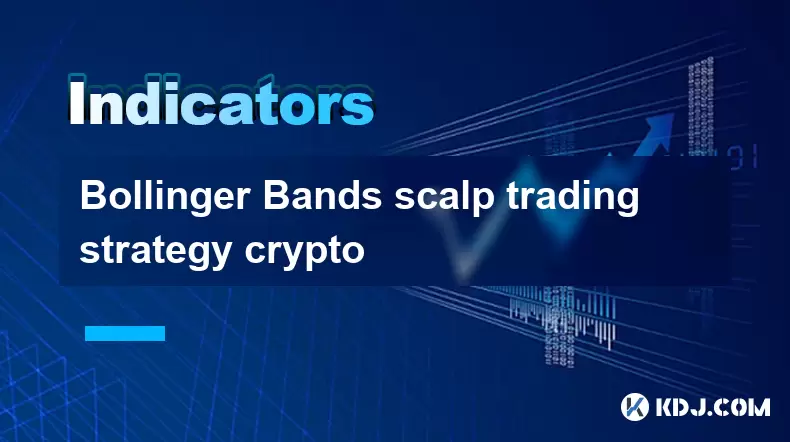-
 Bitcoin
Bitcoin $118,209.3536
1.16% -
 Ethereum
Ethereum $3,151.7546
5.98% -
 XRP
XRP $2.9277
2.35% -
 Tether USDt
Tether USDt $1.0000
0.00% -
 BNB
BNB $689.7099
1.26% -
 Solana
Solana $163.4270
1.91% -
 USDC
USDC $1.0000
0.02% -
 Dogecoin
Dogecoin $0.1983
3.74% -
 TRON
TRON $0.3008
0.51% -
 Cardano
Cardano $0.7435
2.86% -
 Hyperliquid
Hyperliquid $47.6547
-0.48% -
 Stellar
Stellar $0.4625
2.79% -
 Sui
Sui $3.9921
2.71% -
 Chainlink
Chainlink $16.0608
4.23% -
 Hedera
Hedera $0.2348
1.56% -
 Bitcoin Cash
Bitcoin Cash $496.6985
1.25% -
 Avalanche
Avalanche $21.9038
5.41% -
 UNUS SED LEO
UNUS SED LEO $8.8356
-1.88% -
 Shiba Inu
Shiba Inu $0.0...01364
5.31% -
 Toncoin
Toncoin $3.1102
4.35% -
 Litecoin
Litecoin $95.9756
3.59% -
 Polkadot
Polkadot $4.0925
5.78% -
 Monero
Monero $333.7622
-1.44% -
 Uniswap
Uniswap $9.1968
2.25% -
 Bitget Token
Bitget Token $4.6378
6.23% -
 Pepe
Pepe $0.0...01282
6.77% -
 Dai
Dai $1.0002
0.03% -
 Ethena USDe
Ethena USDe $1.0005
0.00% -
 Aave
Aave $329.9143
4.49% -
 Bittensor
Bittensor $441.4995
6.89%
Bollinger Bands scalp trading strategy crypto
Bollinger Bands help crypto scalpers identify volatility, support/resistance levels, and potential reversals by analyzing price interactions with dynamic bands and confirming signals with candlestick patterns or other indicators like RSI and MACD.
Jul 13, 2025 at 05:15 pm

Understanding Bollinger Bands in Crypto Trading
Bollinger Bands are a popular technical analysis tool developed by John Barger that helps traders identify volatility and potential price levels for entry or exit. In the context of cryptocurrency trading, where market volatility is high, Bollinger Bands can be particularly useful for scalpers looking to make quick profits from short-term price movements.
The indicator consists of three lines: a middle moving average (usually 20-period SMA), an upper band set at two standard deviations above the middle line, and a lower band set at two standard deviations below. These bands expand and contract based on market volatility, providing dynamic support and resistance levels.
When applied to crypto markets, such as Bitcoin, Ethereum, or altcoins, Bollinger Bands help traders gauge overbought or oversold conditions. During strong trends, prices may ride along one of the bands, offering signals for continuation trades. For scalping strategies, these dynamics are critical for identifying rapid entry and exit points.
How Scalp Traders Use Bollinger Bands in Crypto
Scalp trading involves taking advantage of small price fluctuations, often within minutes or even seconds. Bollinger Band scalp traders focus on price touching or slightly breaching the bands as potential reversal or breakout signals.
One common method is the "Bollinger Bounce." This strategy assumes that prices tend to return to the middle band after touching either the upper or lower band. In ranging markets, especially during low volatility periods, this approach works well. Traders wait for the price to reach the upper band and look for bearish candlestick patterns before entering a short trade. Similarly, when the price hits the lower band, they watch for bullish signals to initiate long positions.
Another technique is the "Bollinger Squeeze," which occurs when the bands narrow significantly, indicating decreasing volatility. A breakout usually follows a squeeze, making it ideal for scalpers who aim to catch early momentum. The key is to wait for a clear breakout direction and enter the trade with a stop loss just beyond the opposite band.
Setting Up the Bollinger Bands Indicator for Crypto Scalping
Before applying the strategy, it’s essential to configure the Bollinger Bands correctly for the fast-moving crypto environment:
- Timeframe: Most scalp traders use the 1-minute or 5-minute chart, though some prefer the 15-minute for slightly longer holds.
- Period: The default setting is 20-period Simple Moving Average (SMA), which remains effective for most cryptocurrencies.
- Standard Deviation: The default value of 2 is generally acceptable but can be adjusted depending on the asset's volatility. Higher values widen the bands, reducing false signals, while lower values increase sensitivity.
To add the indicator on platforms like TradingView or Binance, follow these steps:
- Open the desired chart
- Click on the "Indicators" tab
- Search for "Bollinger Bands"
- Apply the settings and confirm
Once set up, observe how price interacts with the bands across different crypto pairs like BTC/USDT, ETH/USDT, or smaller altcoins. It's important to test the setup using historical data or demo accounts before live trading.
Entry and Exit Rules for Bollinger Bands Scalping Strategy
Successful scalp trading requires precise entry and exit rules. Here's a breakdown of how to execute trades using Bollinger Bands in crypto:
- Watch for price touches or bounces off the bands
- Look for candlestick confirmation near the bands—such as pin bars, engulfing patterns, or inside bars
- Enter a sell trade when the price touches the upper band and shows bearish reversal signs
- Enter a buy trade when the price reaches the lower band and exhibits bullish reversal patterns
- Place a stop-loss order just beyond the opposite band to manage risk
- Set a take-profit level at the middle band or adjust dynamically based on recent price action
- Close partial positions if the price moves rapidly toward the target to lock in profits
It's crucial to avoid entering trades solely based on price hitting the bands without confirmation. False breakouts are common in crypto due to its high volatility, so combining Bollinger Bands with other tools like RSI or MACD can enhance accuracy.
Combining Bollinger Bands with Other Indicators for Better Accuracy
While Bollinger Bands are powerful on their own, integrating them with complementary indicators improves the reliability of scalp trading signals:
- Relative Strength Index (RSI): Helps confirm overbought (>70) or oversold (<30) conditions when price approaches the bands. A divergence between RSI and price can signal a potential reversal.
- MACD (Moving Average Convergence Divergence): Useful for confirming trend direction and momentum. A bullish or bearish MACD crossover aligns with Bollinger Band bounces, increasing the probability of successful trades.
- Volume Profile or OBV (On-Balance Volume): Validates whether institutional or retail participation supports the move near the bands.
By layering these tools, traders can filter out weak signals and focus on high-probability setups. For example, if the price touches the upper band, RSI is above 70, and MACD has just turned bearish, it strengthens the case for a short trade.
Frequently Asked Questions
Q: Can Bollinger Bands be used on all cryptocurrencies?
Yes, Bollinger Bands are applicable to any cryptocurrency with sufficient liquidity and volatility. However, results may vary across different assets due to varying market behaviors. Major coins like Bitcoin and Ethereum tend to provide more reliable signals compared to lesser-known altcoins.
Q: Should I adjust Bollinger Band settings for different timeframes?
Yes, while the default settings work well for most scenarios, adjusting the period or standard deviation can improve performance on specific timeframes. Shorter timeframes like 1-minute charts might benefit from tighter settings, while higher timeframes could require broader parameters.
Q: What is the best way to practice Bollinger Bands scalp trading without risking real money?
Use a demo account or paper trading platform that simulates real market conditions. Platforms like TradingView allow users to draw trades manually, while exchanges like Binance offer demo modes for futures trading. Practicing consistently over several weeks helps build confidence and refine decision-making.
Q: Is it safe to rely solely on Bollinger Bands for scalping in crypto?
No single indicator should be used in isolation. While Bollinger Bands offer valuable insights into volatility and potential reversals, they are prone to false signals in highly volatile crypto markets. Combining them with volume indicators, candlestick patterns, or oscillators like RSI enhances decision-making and reduces risk.
Disclaimer:info@kdj.com
The information provided is not trading advice. kdj.com does not assume any responsibility for any investments made based on the information provided in this article. Cryptocurrencies are highly volatile and it is highly recommended that you invest with caution after thorough research!
If you believe that the content used on this website infringes your copyright, please contact us immediately (info@kdj.com) and we will delete it promptly.
- XRP Price: Higher Lows Hint at Potential Trend Shift?
- 2025-07-16 15:10:12
- Bitcoin, Crypto Casinos, and Bonuses: A New Yorker's Guide to Hitting the Jackpot
- 2025-07-16 15:15:12
- Bitcoin, Deutsche Bank, and Mainstream Adoption: A New Era?
- 2025-07-16 14:30:13
- Bitcoin's ETF Demand & Institutional Momentum: A NYC Perspective
- 2025-07-16 14:50:12
- Bitcoin's Bullish Run: Demand Surges, Correction Unlikely?
- 2025-07-16 12:30:12
- JPMorgan, Blockchain, and Stablecoins: A Wall Street Revolution?
- 2025-07-16 14:50:12
Related knowledge

Advanced RSI strategies for crypto
Jul 13,2025 at 11:01am
Understanding the Basics of RSI in Cryptocurrency TradingThe Relative Strength Index (RSI) is a momentum oscillator used to measure the speed and chan...

Crypto RSI for day trading
Jul 12,2025 at 11:14am
Understanding RSI in the Context of Cryptocurrency TradingThe Relative Strength Index (RSI) is a momentum oscillator used to measure the speed and cha...

Crypto RSI for scalping
Jul 12,2025 at 11:00pm
Understanding RSI in the Context of Crypto TradingThe Relative Strength Index (RSI) is a momentum oscillator widely used by traders to measure the spe...

What does an RSI of 30 mean in crypto
Jul 15,2025 at 07:07pm
Understanding RSI in Cryptocurrency TradingRelative Strength Index (RSI) is a momentum oscillator widely used in cryptocurrency trading to measure the...

What does an RSI of 70 mean in crypto
Jul 13,2025 at 06:07pm
Understanding the RSI Indicator in Cryptocurrency TradingThe Relative Strength Index (RSI) is a widely used technical analysis tool that helps traders...

Does RSI work in a bear market for crypto
Jul 16,2025 at 01:36pm
Understanding RSI in Cryptocurrency TradingThe Relative Strength Index (RSI) is a momentum oscillator used by traders to measure the speed and change ...

Advanced RSI strategies for crypto
Jul 13,2025 at 11:01am
Understanding the Basics of RSI in Cryptocurrency TradingThe Relative Strength Index (RSI) is a momentum oscillator used to measure the speed and chan...

Crypto RSI for day trading
Jul 12,2025 at 11:14am
Understanding RSI in the Context of Cryptocurrency TradingThe Relative Strength Index (RSI) is a momentum oscillator used to measure the speed and cha...

Crypto RSI for scalping
Jul 12,2025 at 11:00pm
Understanding RSI in the Context of Crypto TradingThe Relative Strength Index (RSI) is a momentum oscillator widely used by traders to measure the spe...

What does an RSI of 30 mean in crypto
Jul 15,2025 at 07:07pm
Understanding RSI in Cryptocurrency TradingRelative Strength Index (RSI) is a momentum oscillator widely used in cryptocurrency trading to measure the...

What does an RSI of 70 mean in crypto
Jul 13,2025 at 06:07pm
Understanding the RSI Indicator in Cryptocurrency TradingThe Relative Strength Index (RSI) is a widely used technical analysis tool that helps traders...

Does RSI work in a bear market for crypto
Jul 16,2025 at 01:36pm
Understanding RSI in Cryptocurrency TradingThe Relative Strength Index (RSI) is a momentum oscillator used by traders to measure the speed and change ...
See all articles

























































































